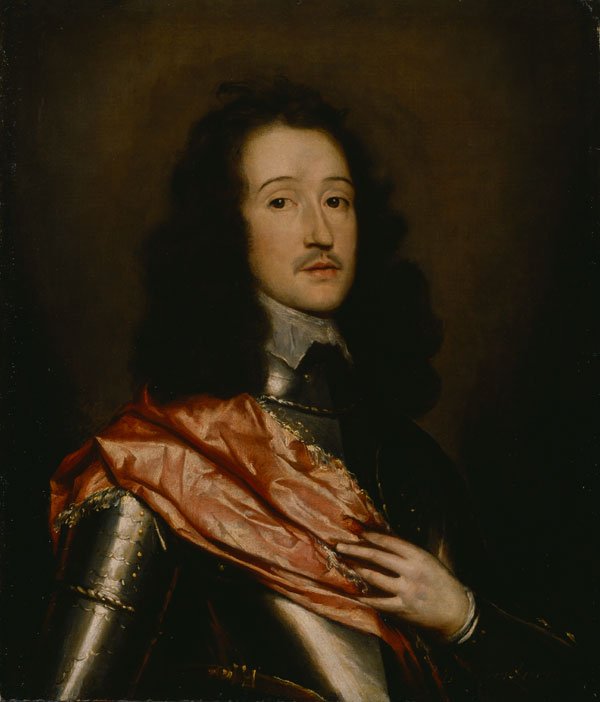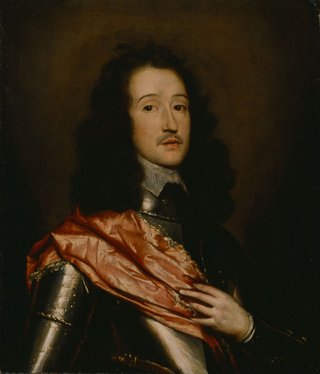

-
Acquisition
Cartwright Bequest, 1686
-
Accession number
DPG363
-
Artist
William Dobson
-
Date
c.1645/6
-
Dimensions
74.9 x 63.5 cm
-
Inscription
Inscribed bottom right: Col. Lovelace
-
Materials
Oil on canvas
-
Notes
Adopted by Charles Leggatt, 1995
Richard Lovelace (1617-c. 1657) locks eyes with the viewer in this portrait which was painted shortly after his first imprisonment. A cavalier soldier and poet, Lovelace served in the Scottish expeditions during the Bishops’ Wars (1639-40) and fought alongside the Royalists in the English Civil War. He was imprisoned in 1642 after presenting a pro-Royalist petition to the House of Commons, during which he wrote the song ‘Stone walls do not a prison make.’ In 1648, Lovelace was again imprisoned, this time for nearly a year; when he was released in April 1649, King Charles I (1600-49) had been executed and the Royalist cause seemed lost. After his release, he worked on the publication of his collected poetry, which appeared under the title Lucasta in 1649.
William Dobson (1611-1646) was a portraitist and was regarded as one of the first significant English painters. After the death of Anthony van Dyck (1599-1641), the court painter of King Charles I, Dobson’s career took off. He painted portraits of courtiers, diplomats, politicians, and even the future King Charles II (1630-85) as Prince of Wales. After the breakout of the English Civil War, Dobson would focus on portraits of soldiers, Royalist heroes, and the Cavaliers, such as this one.

Want to use or download this artwork?
For personal use - Download artwork
For commercial use - Purchase a licence & download on Bridgeman images